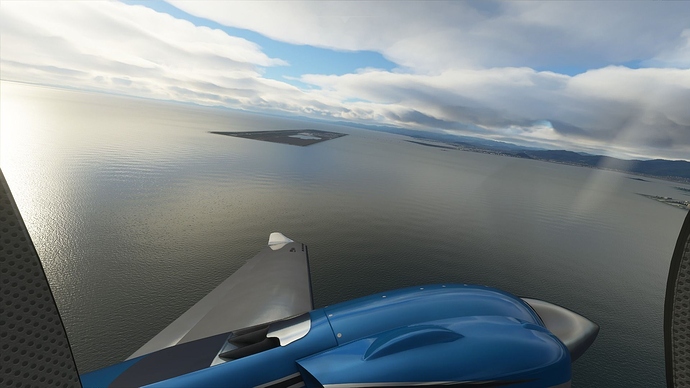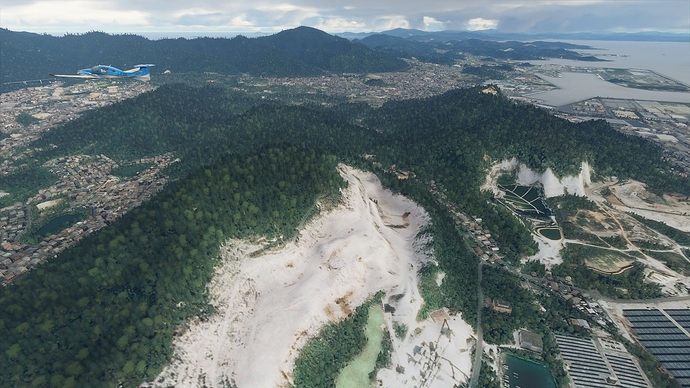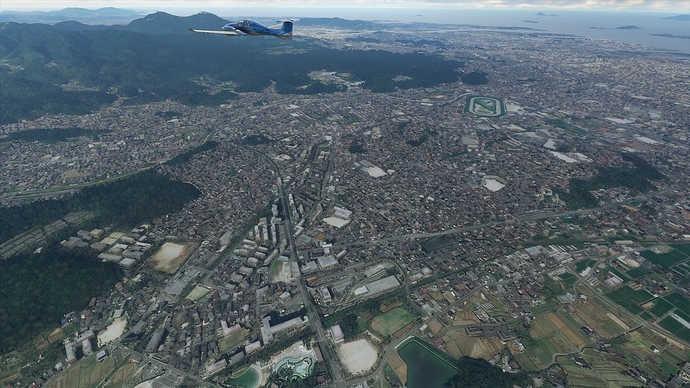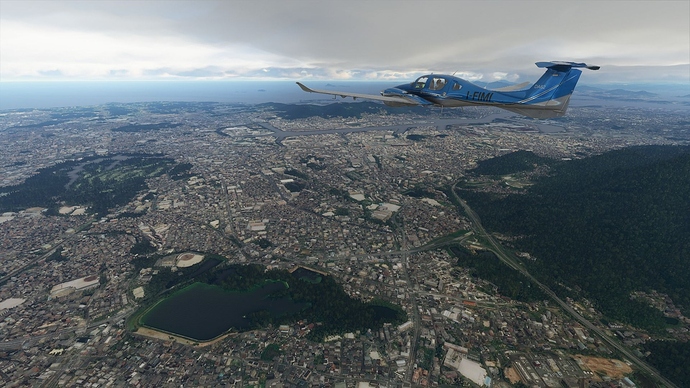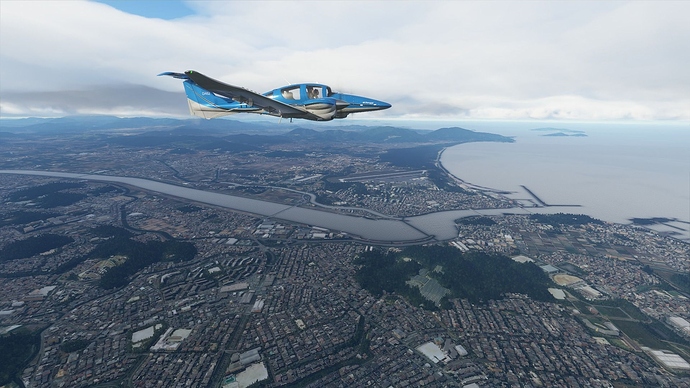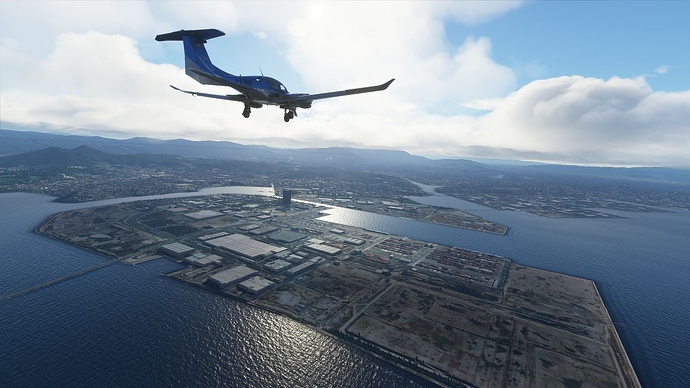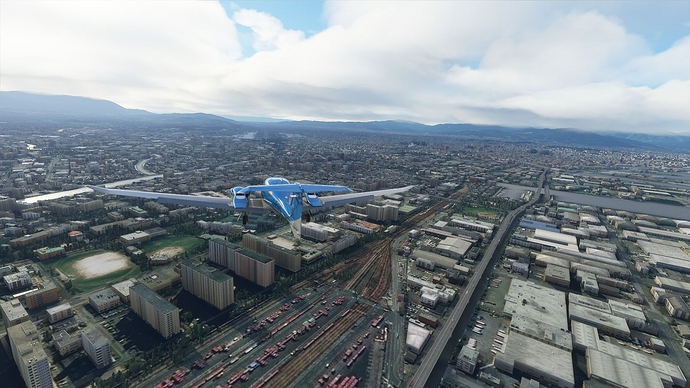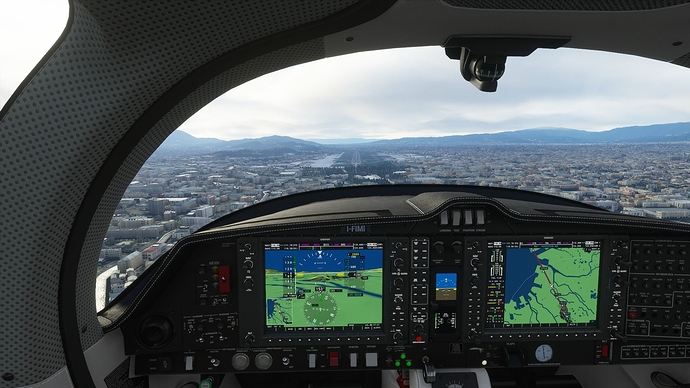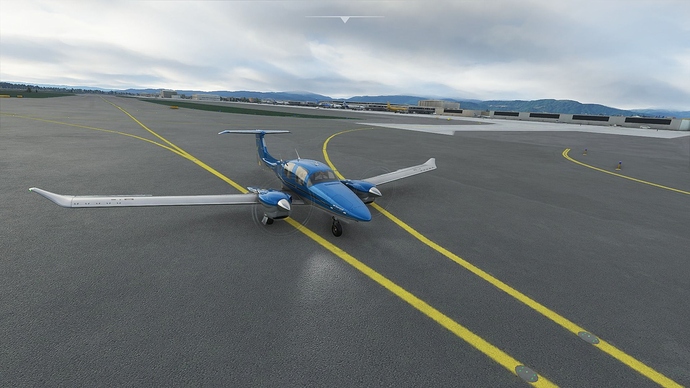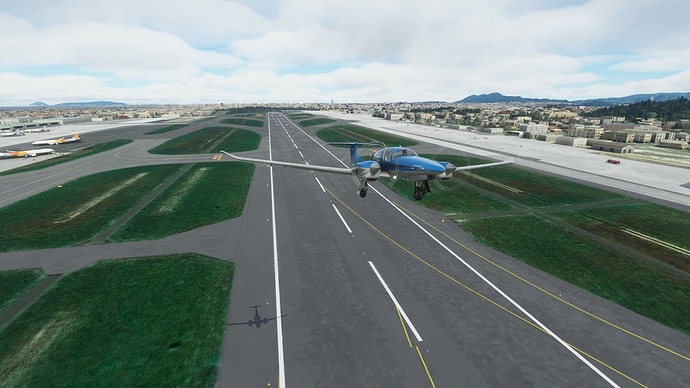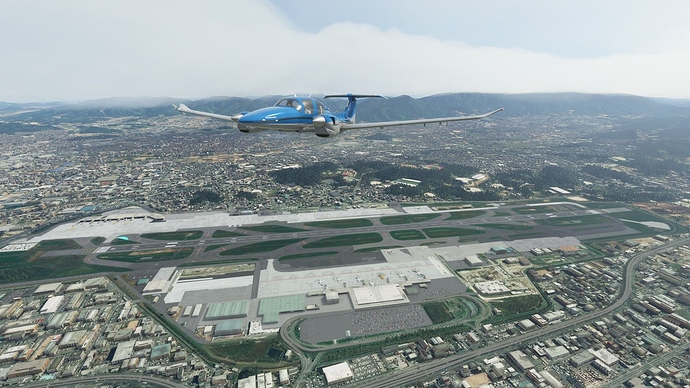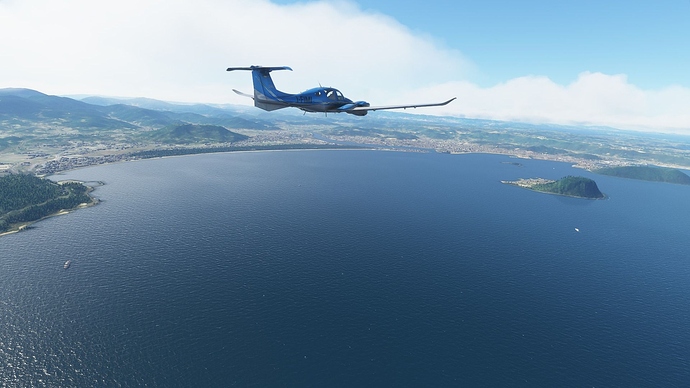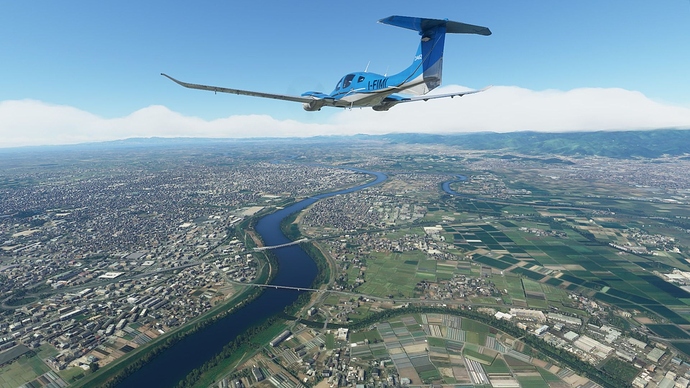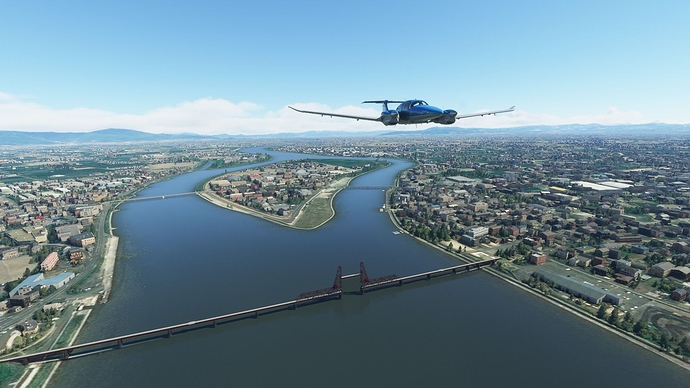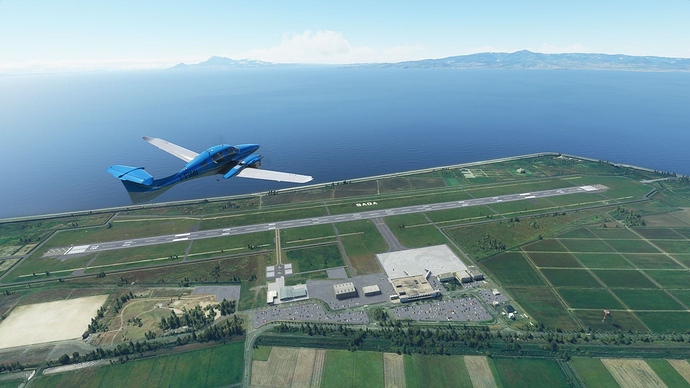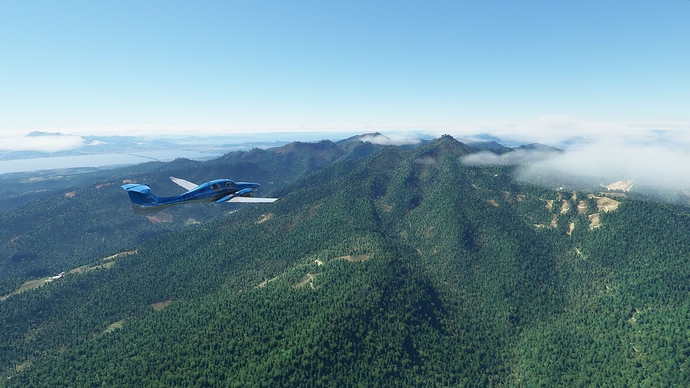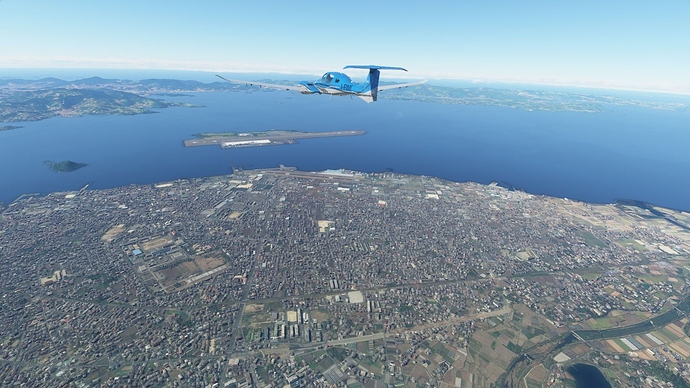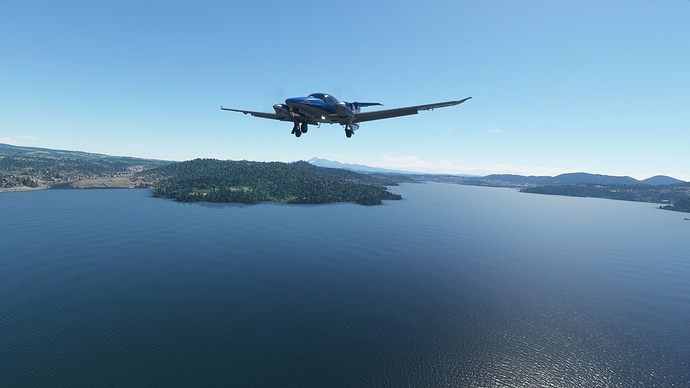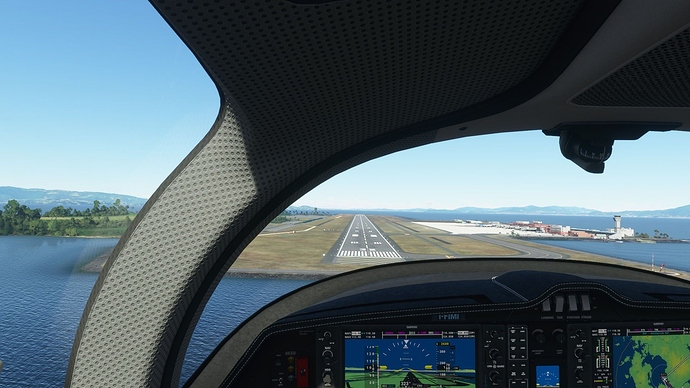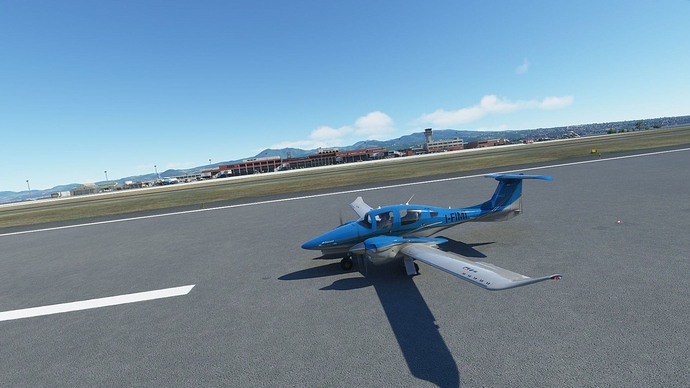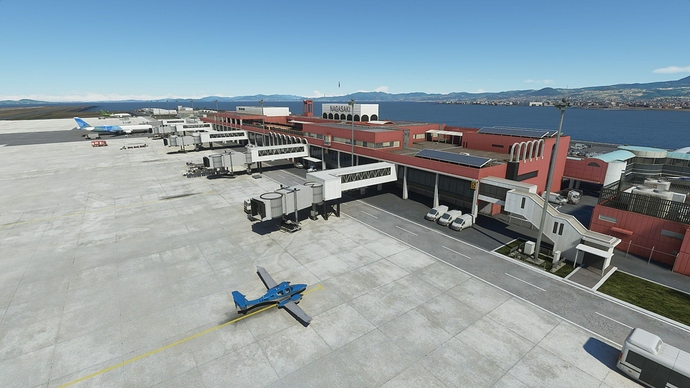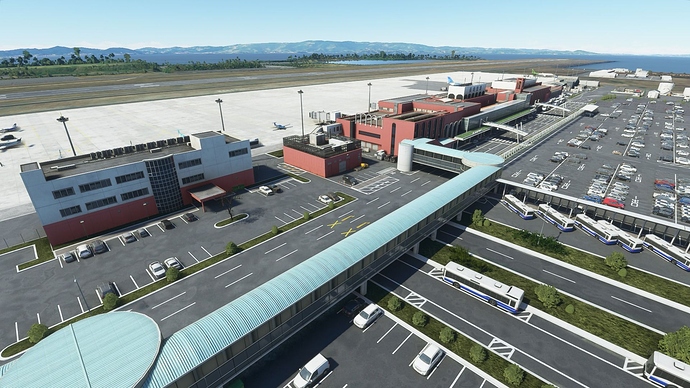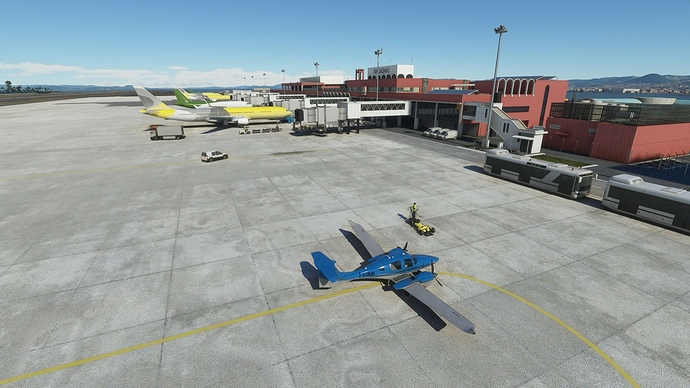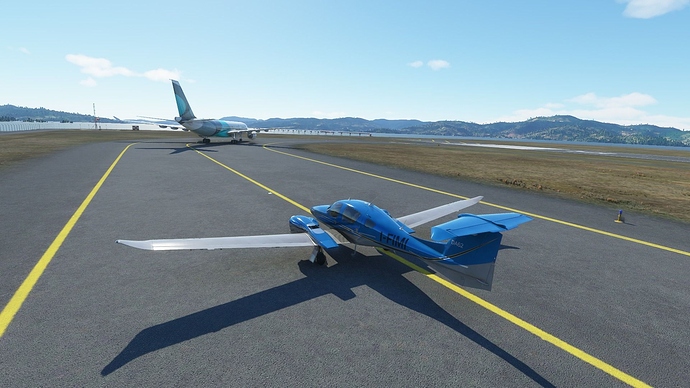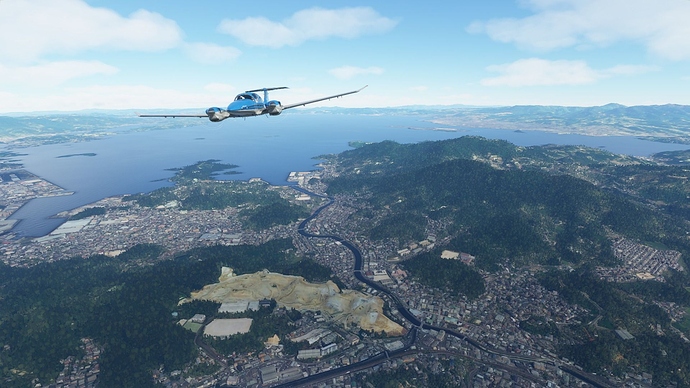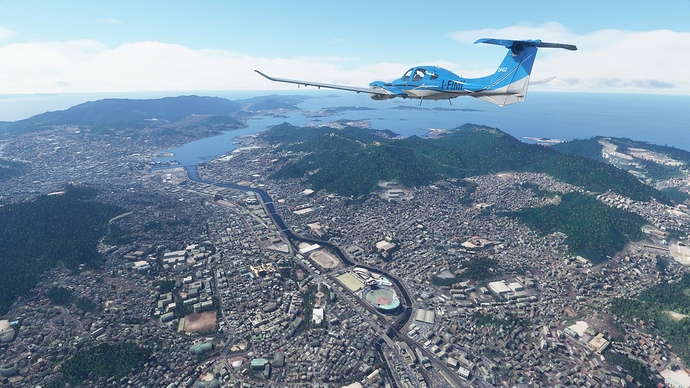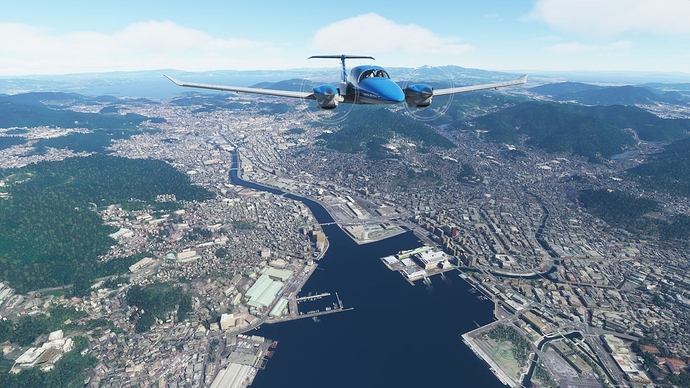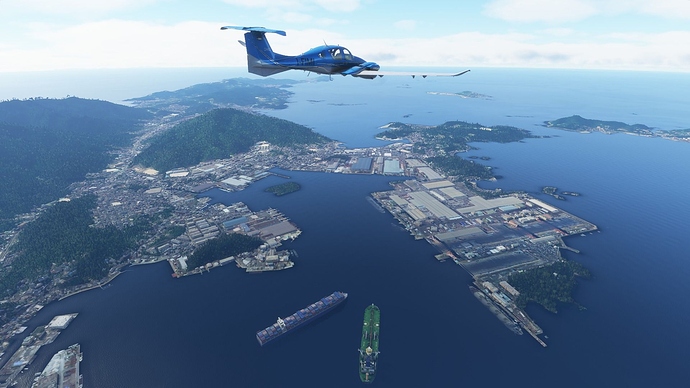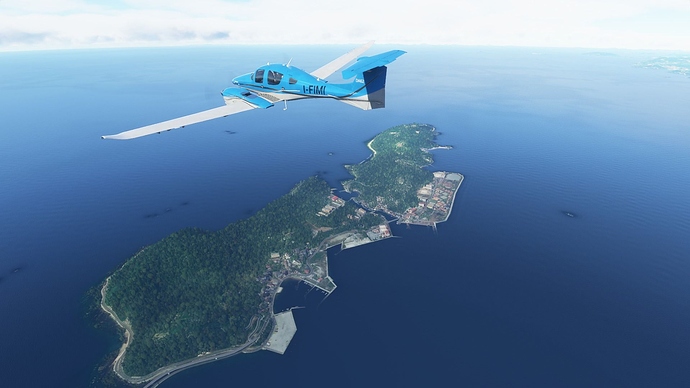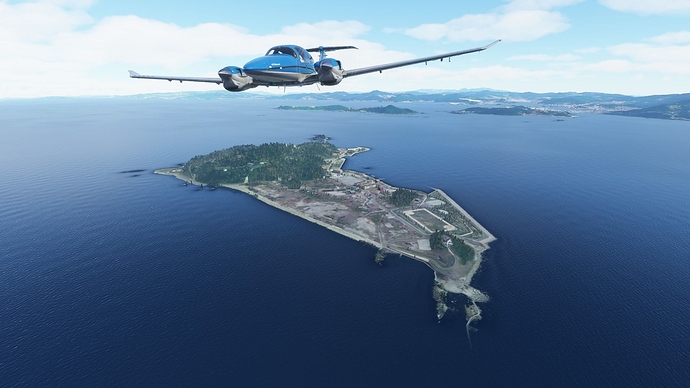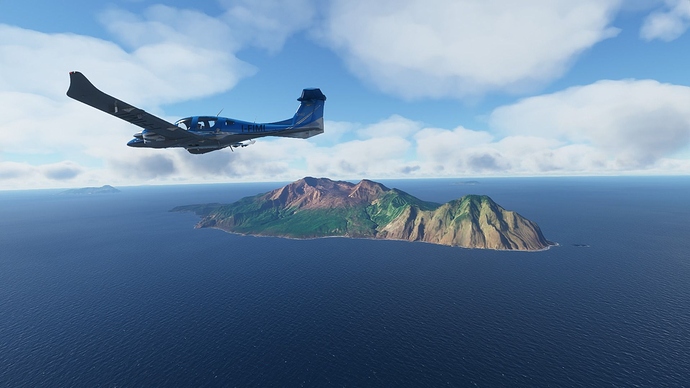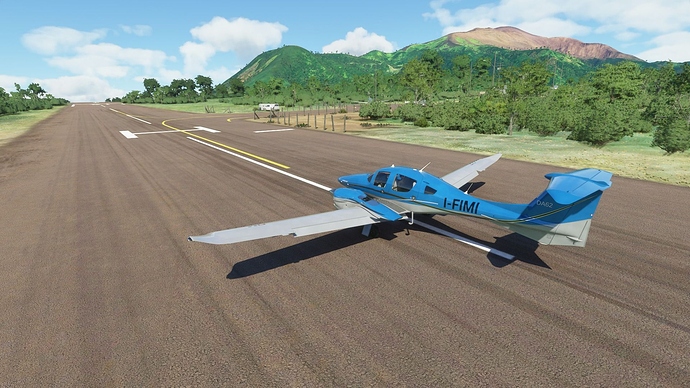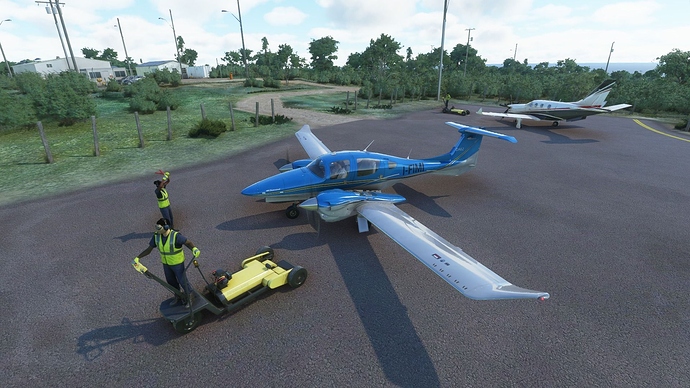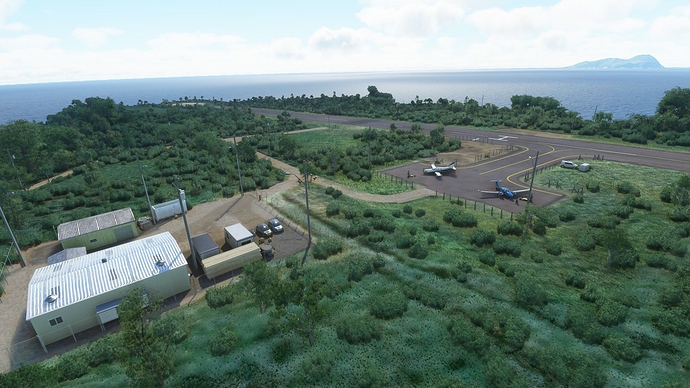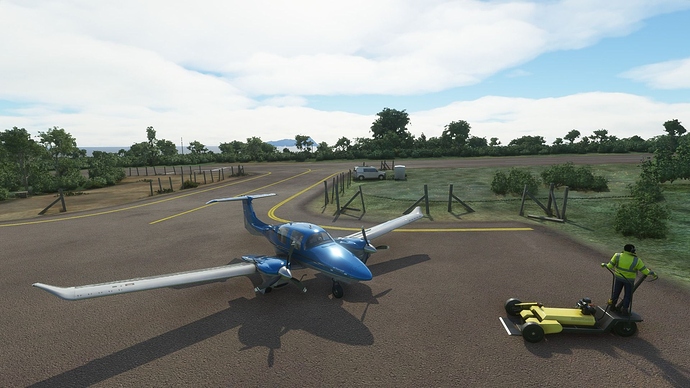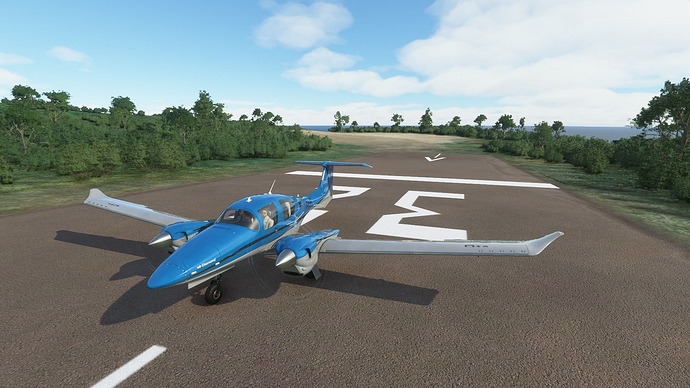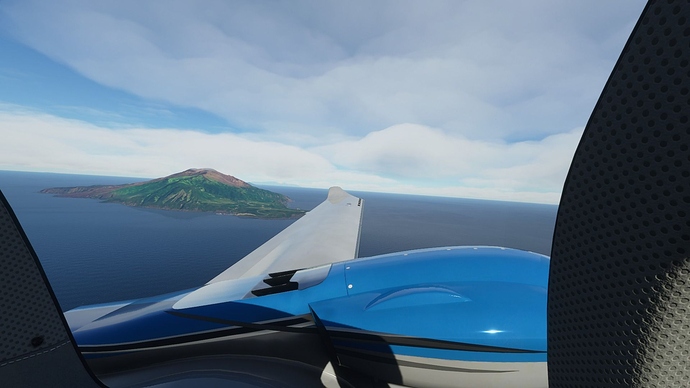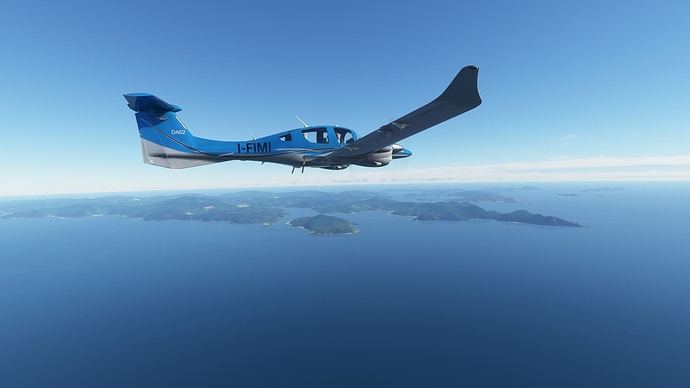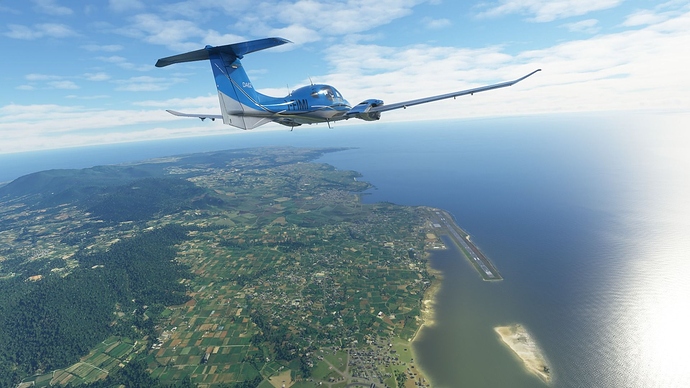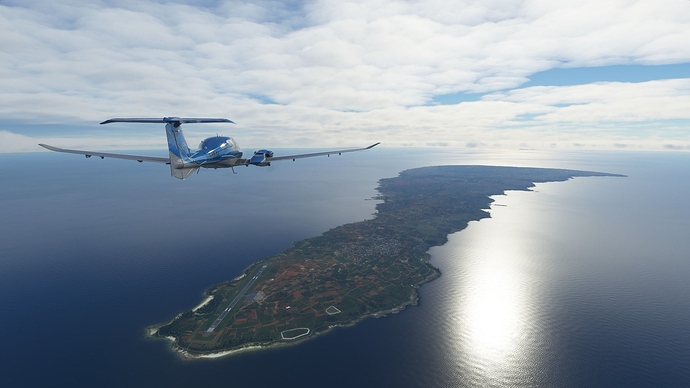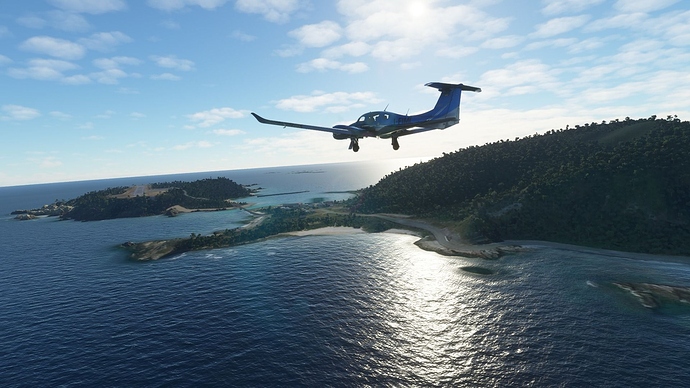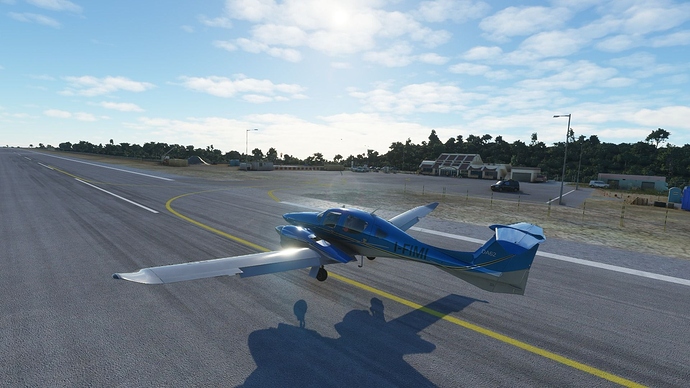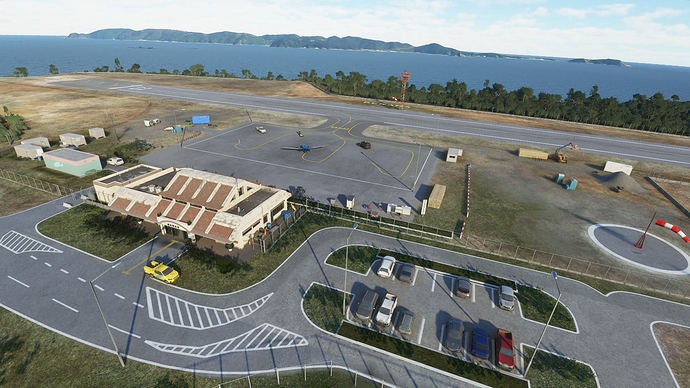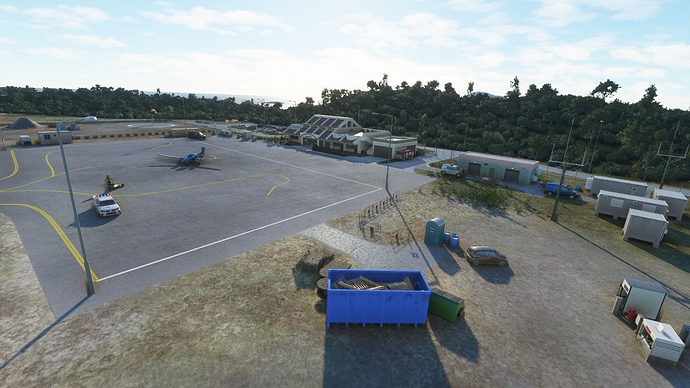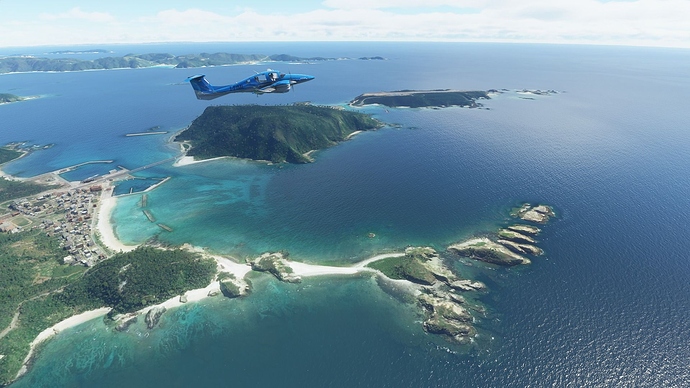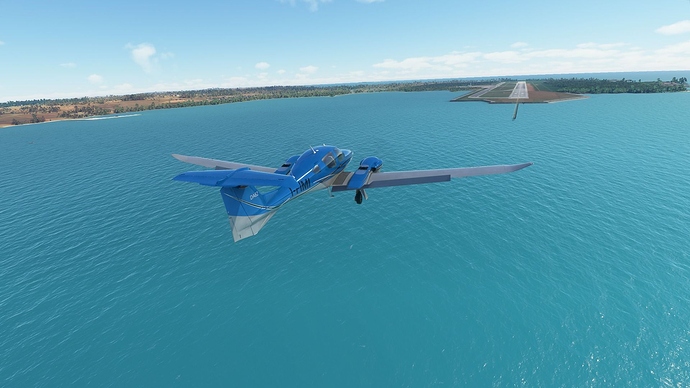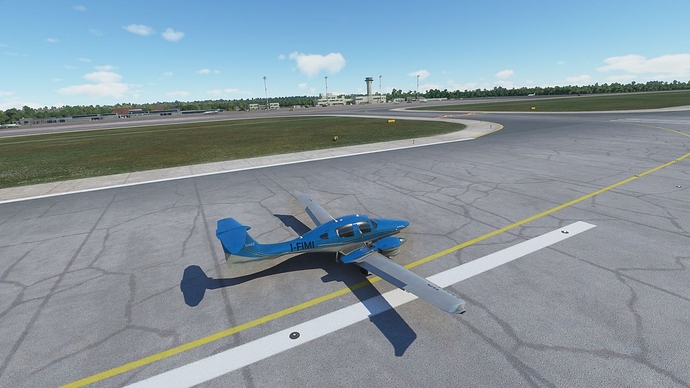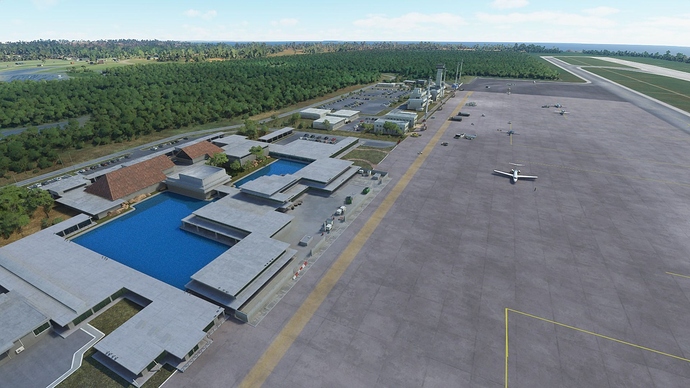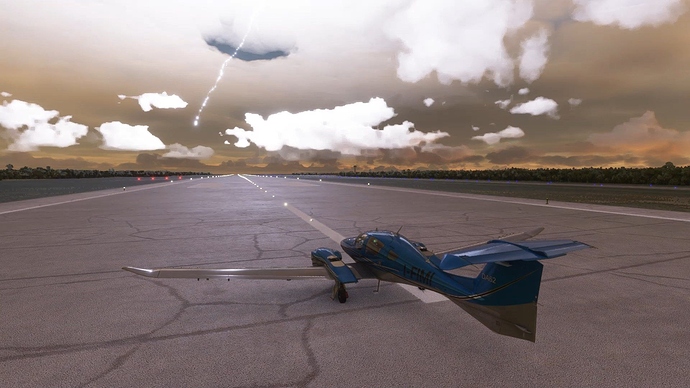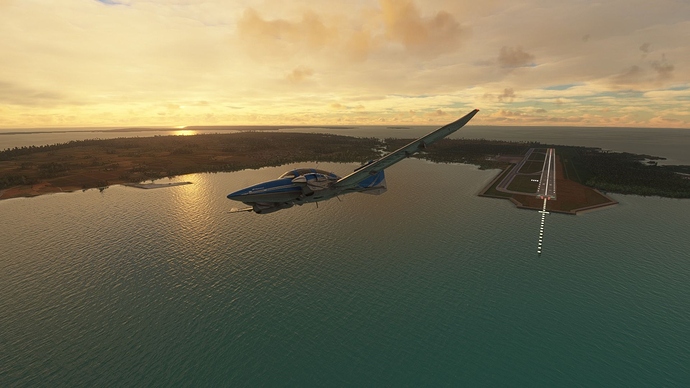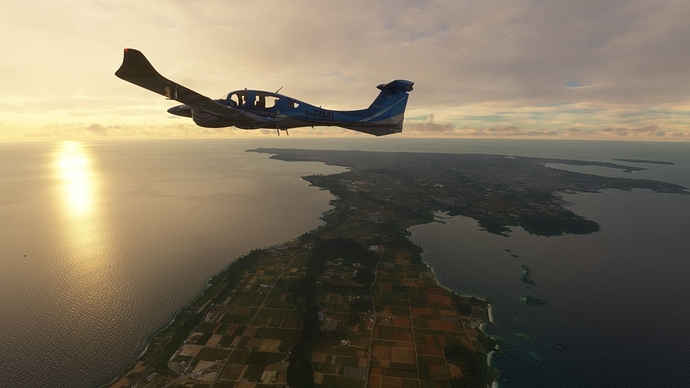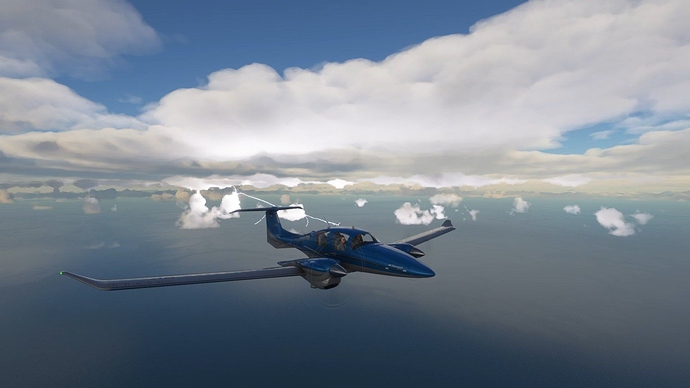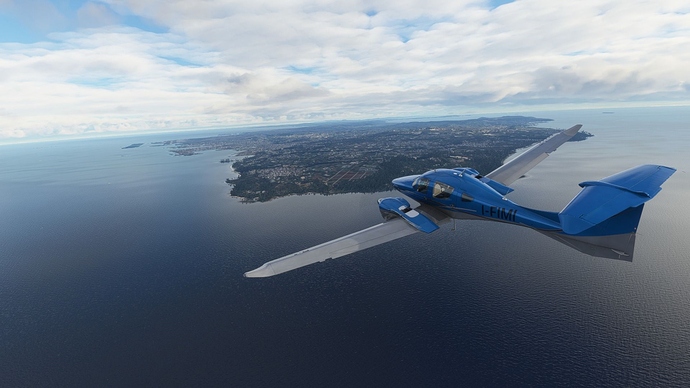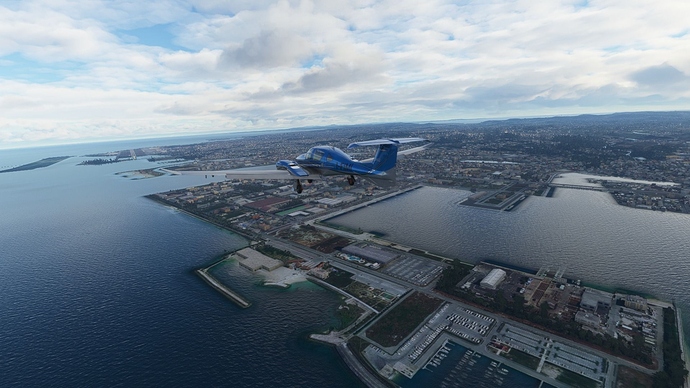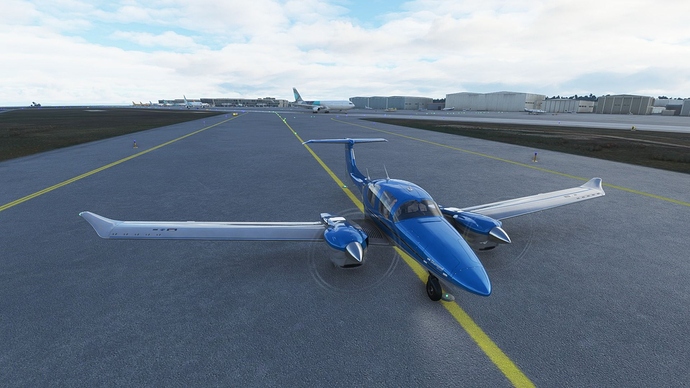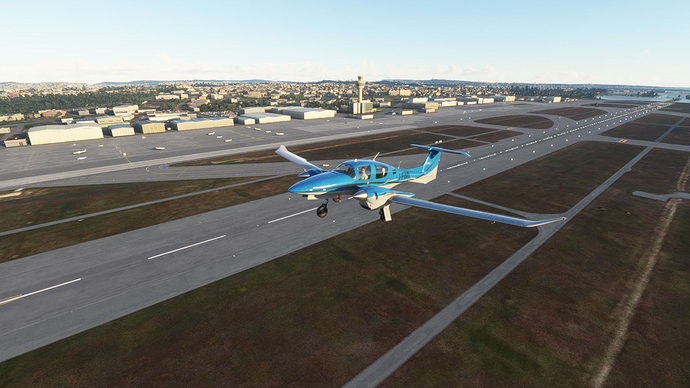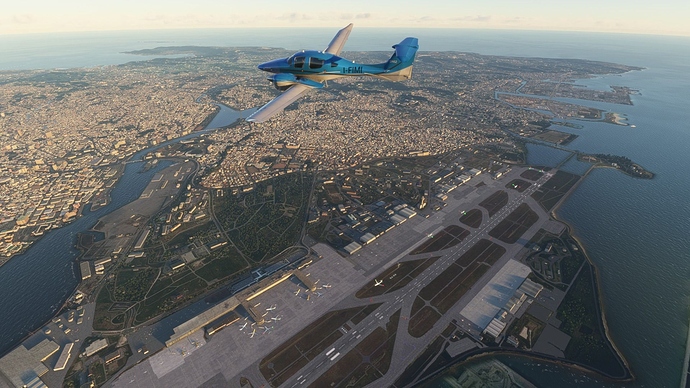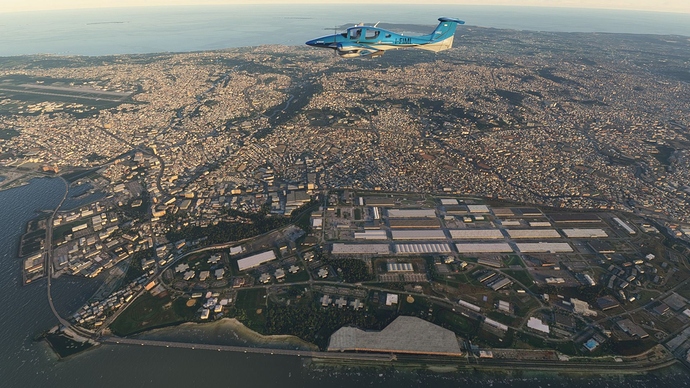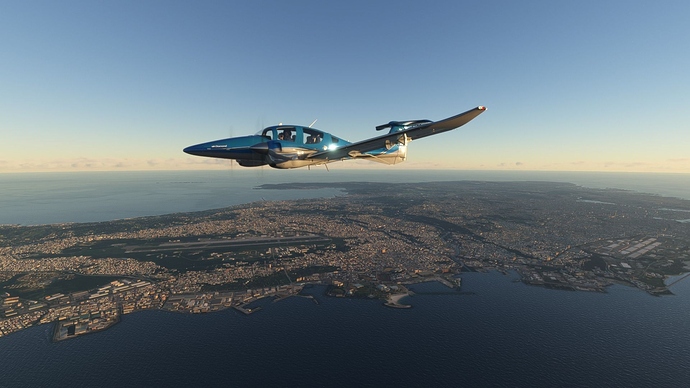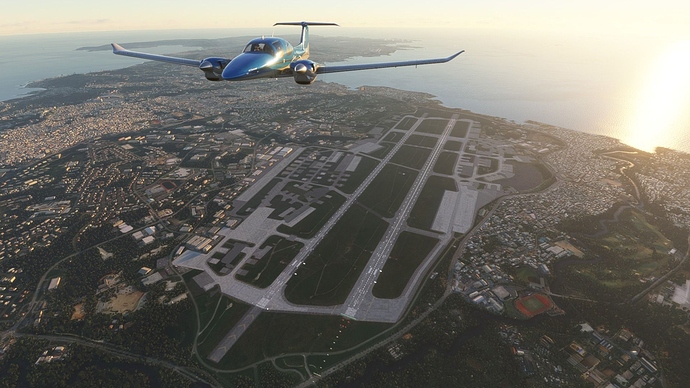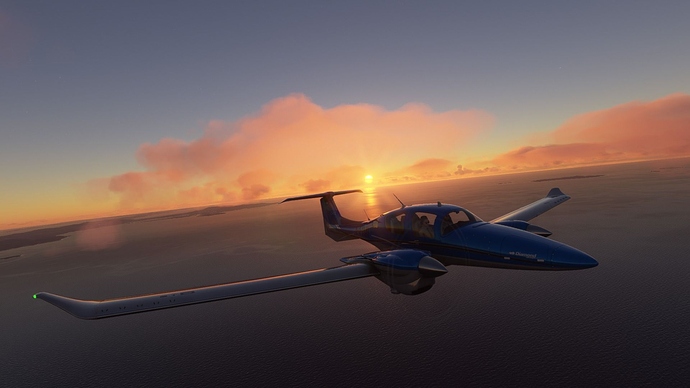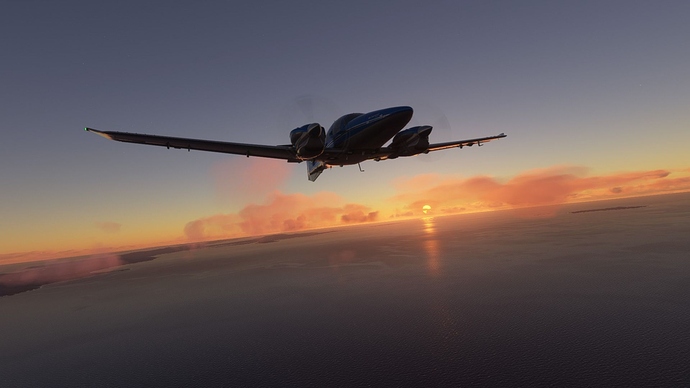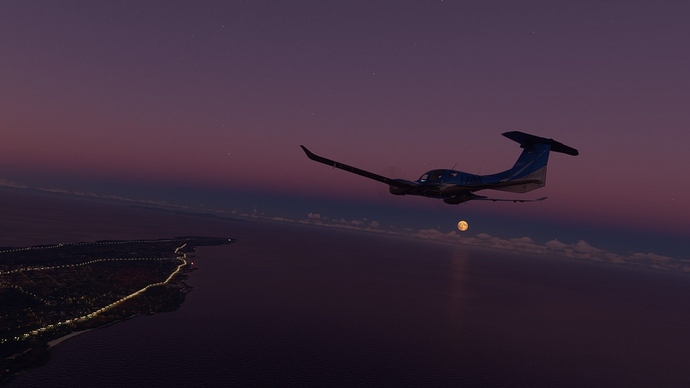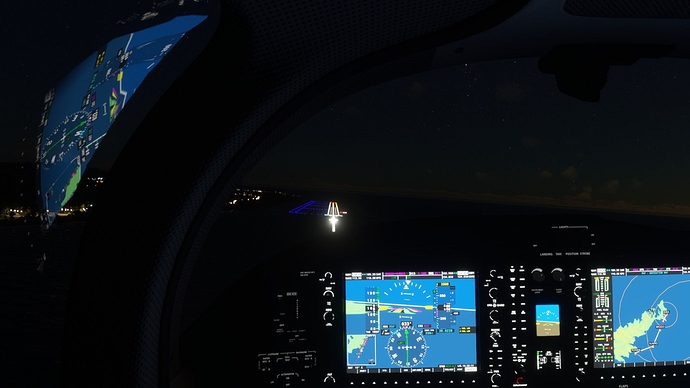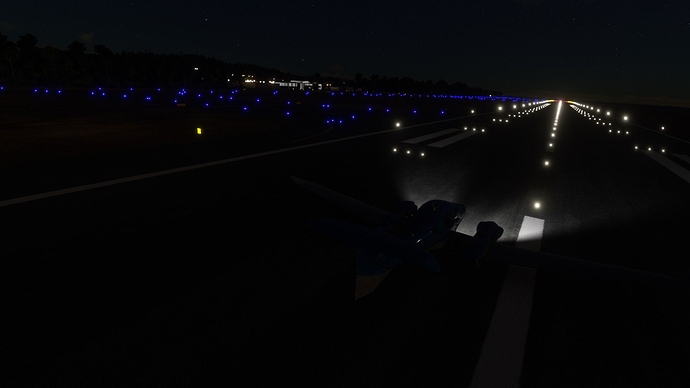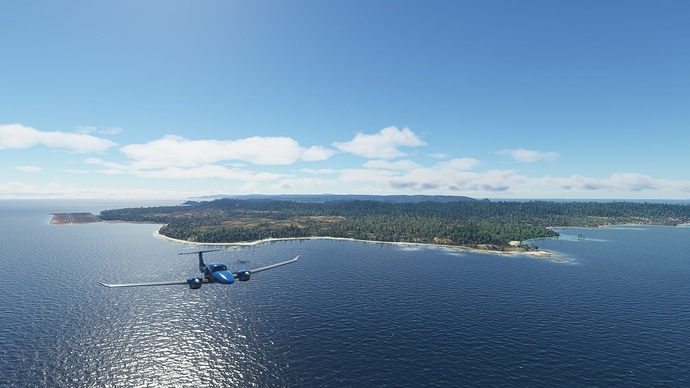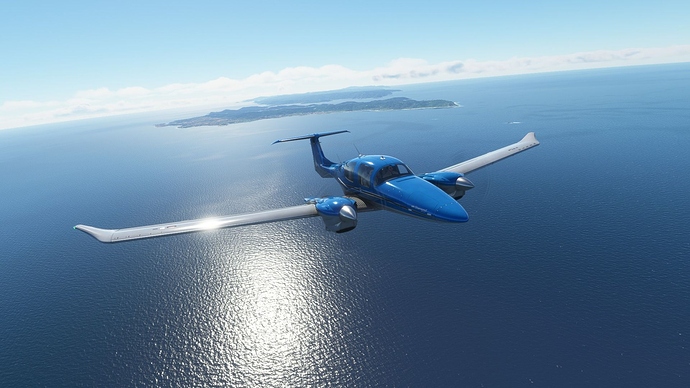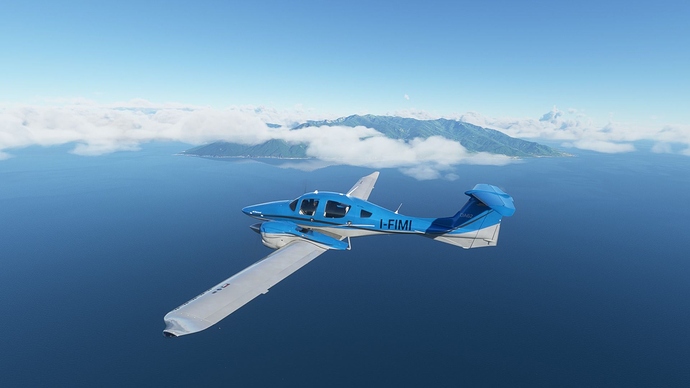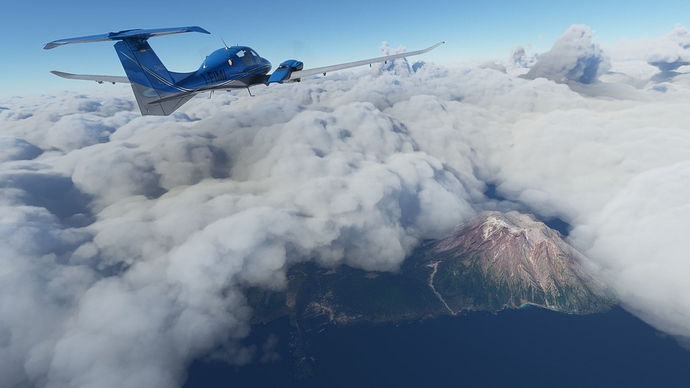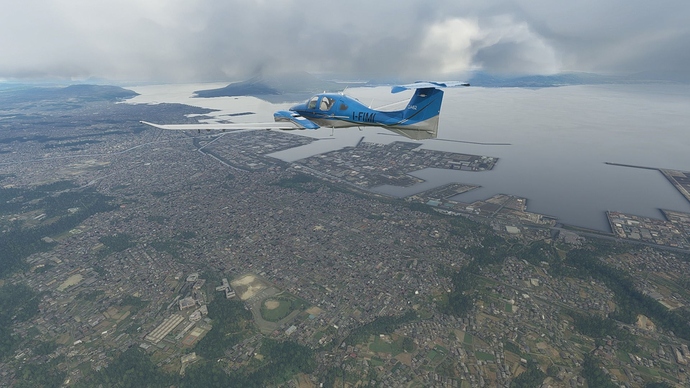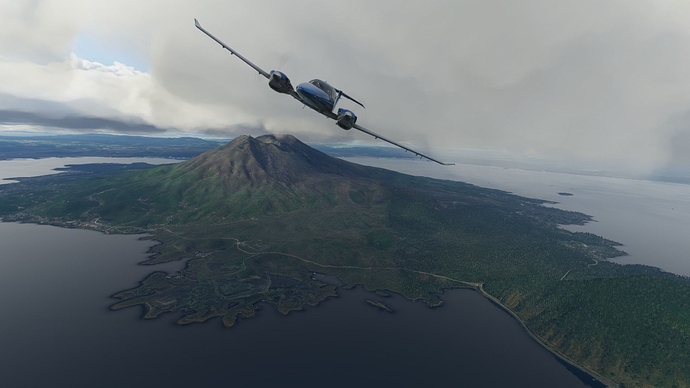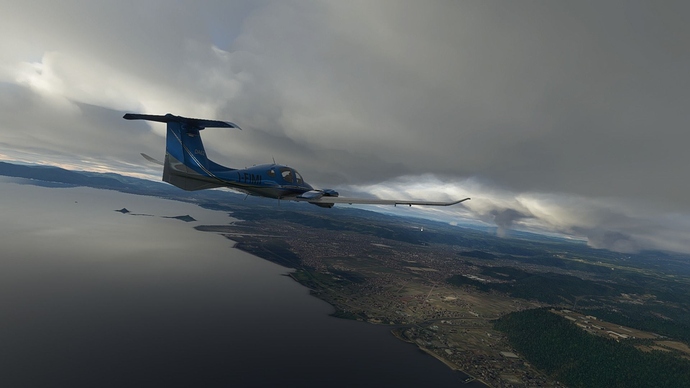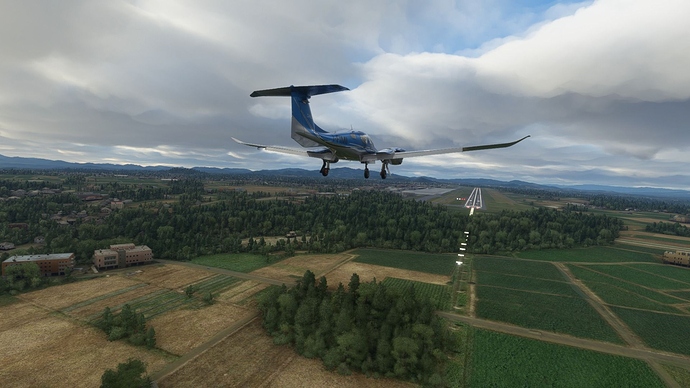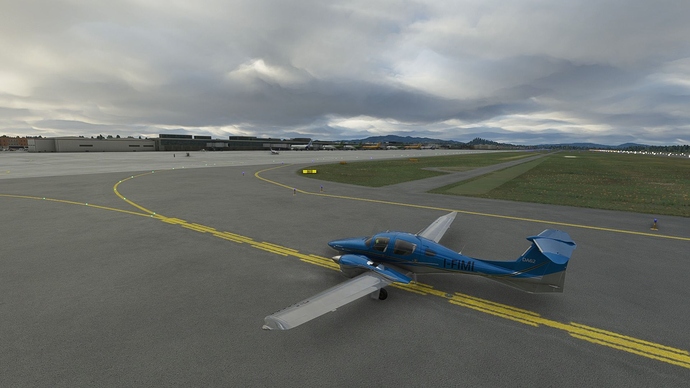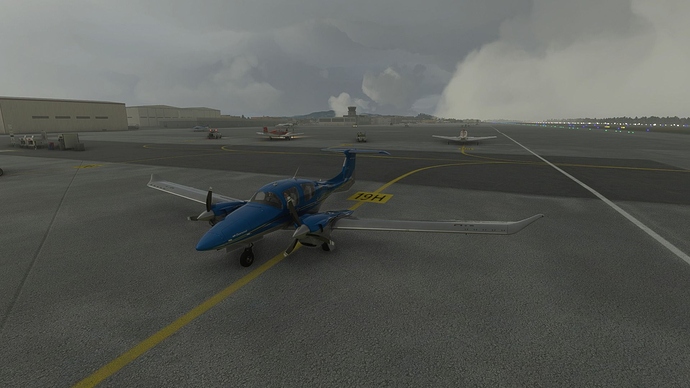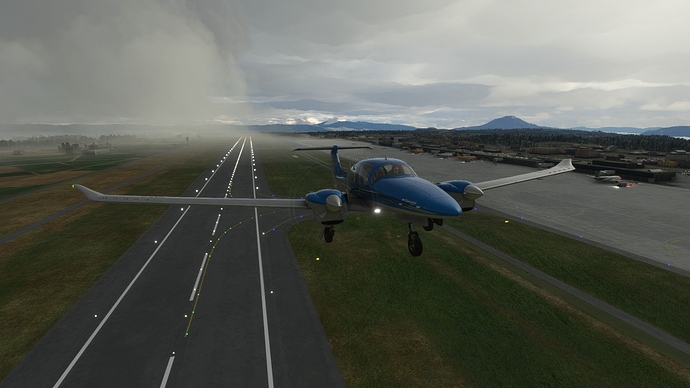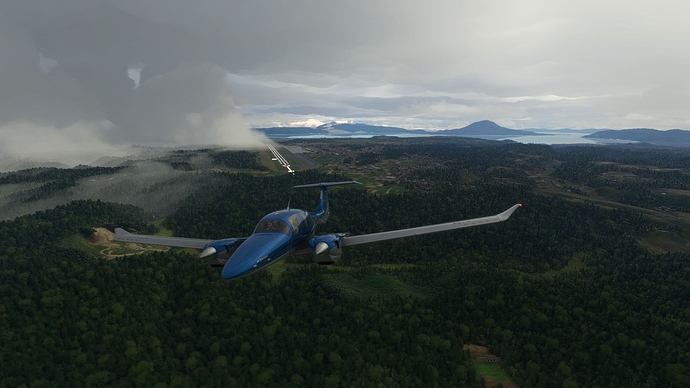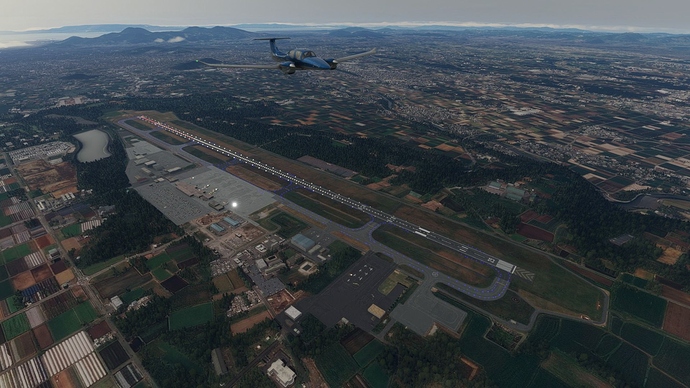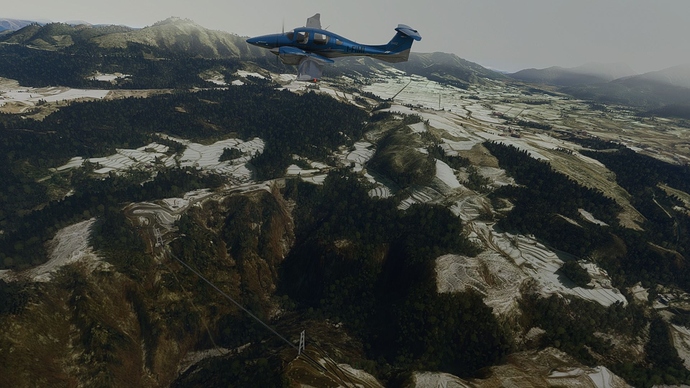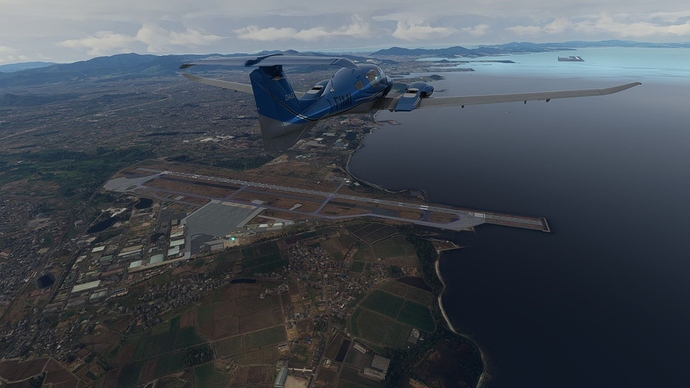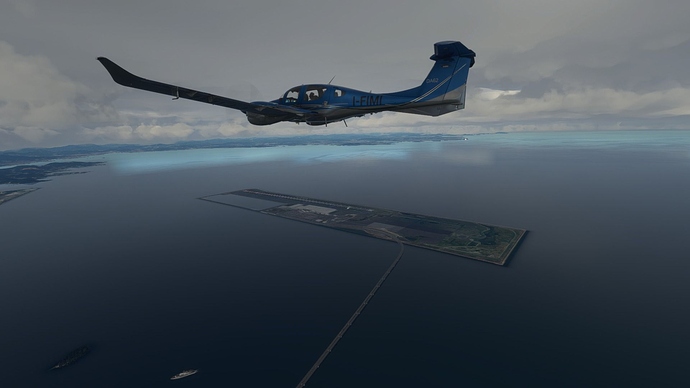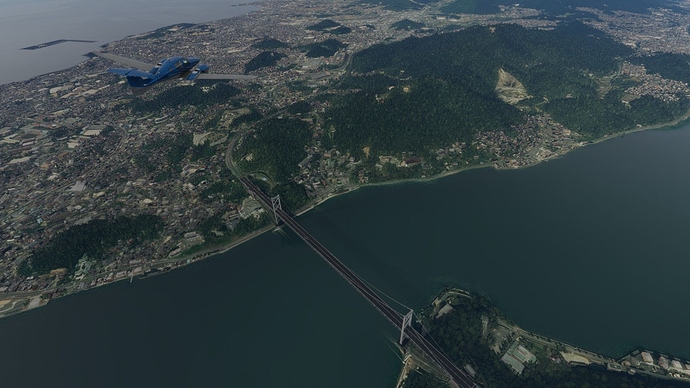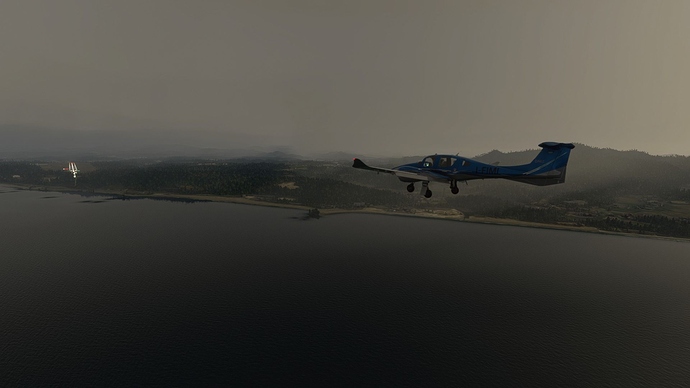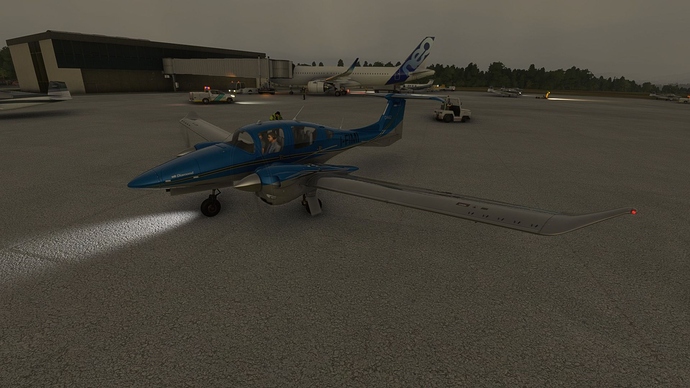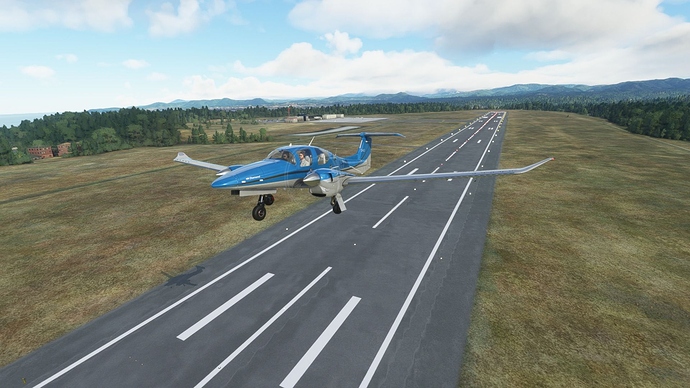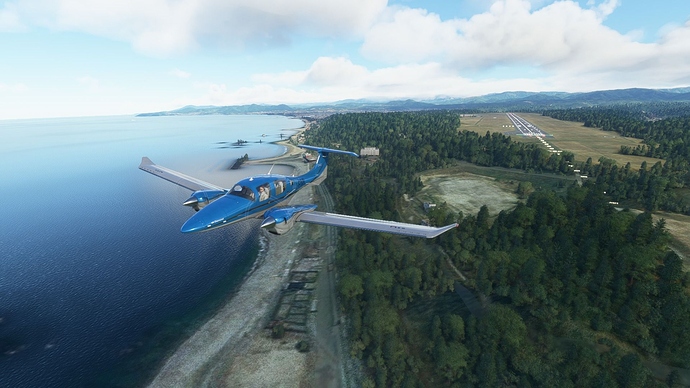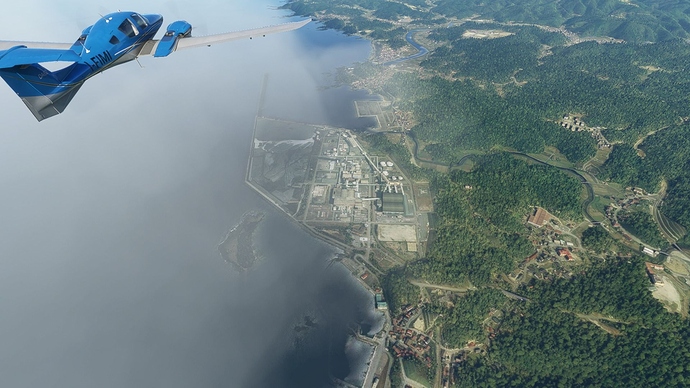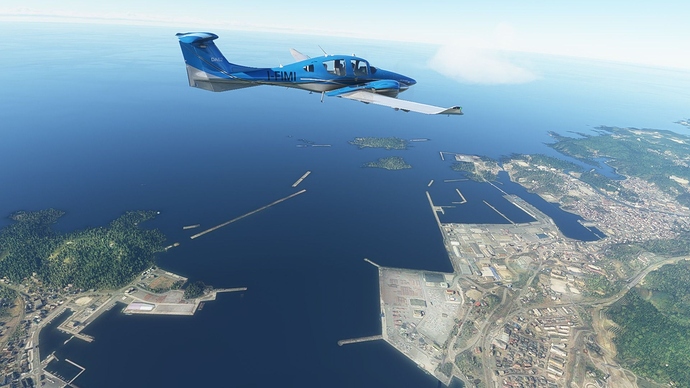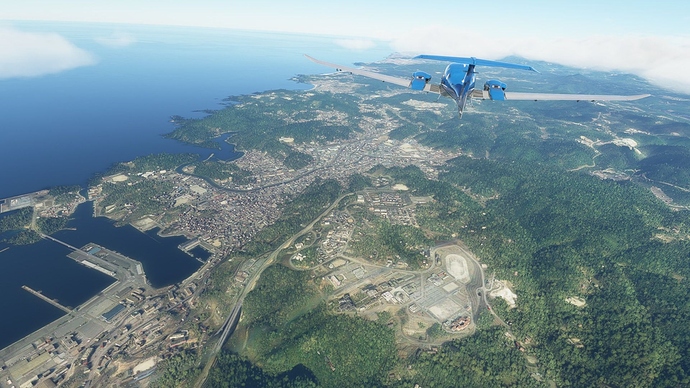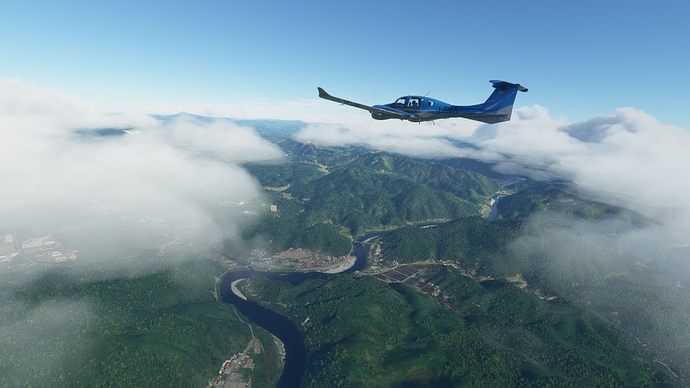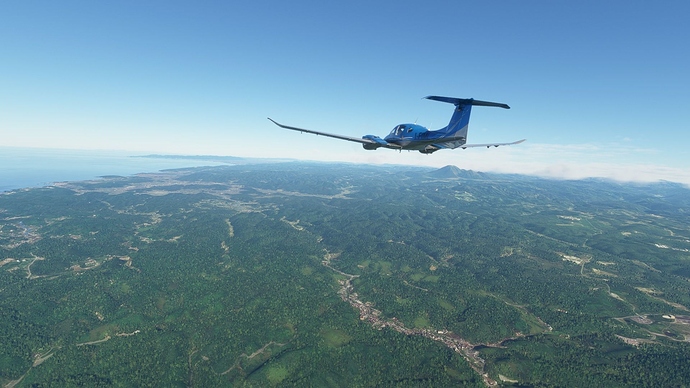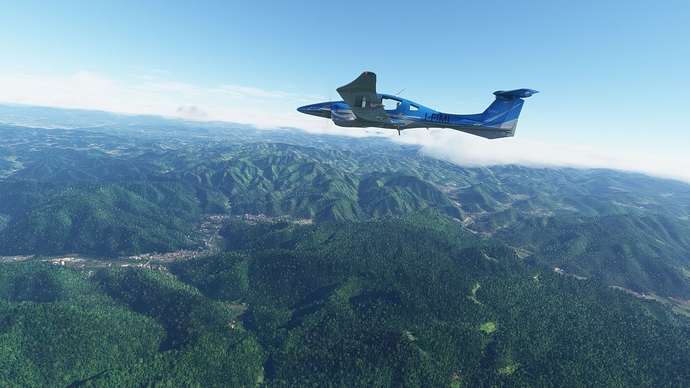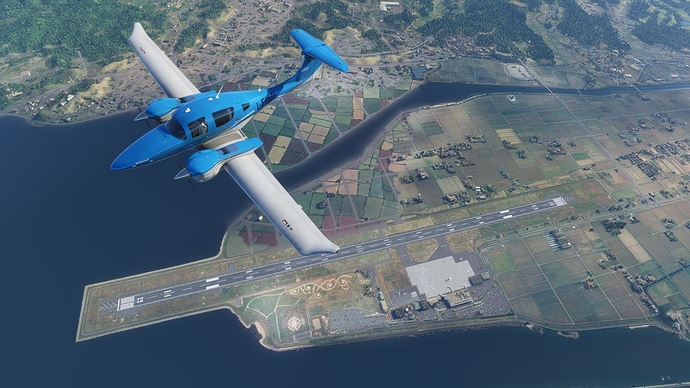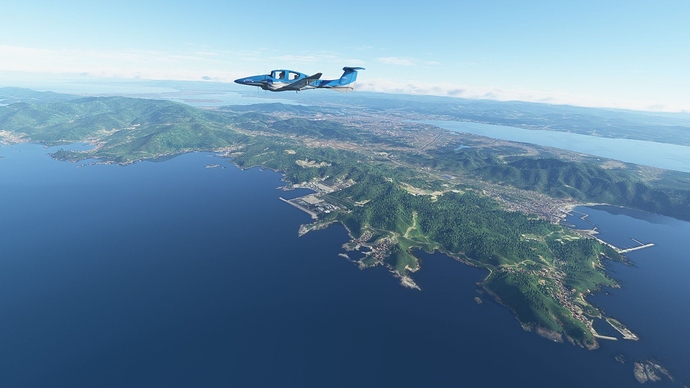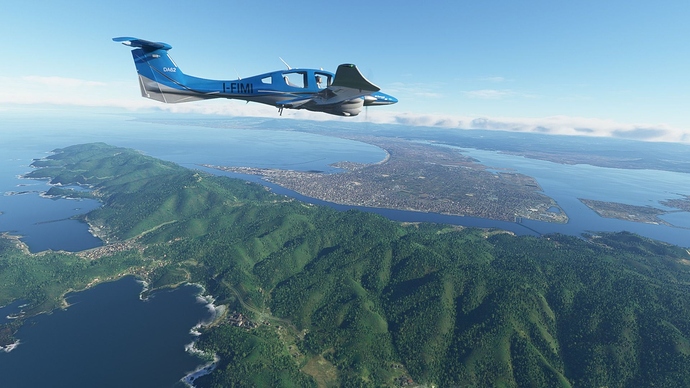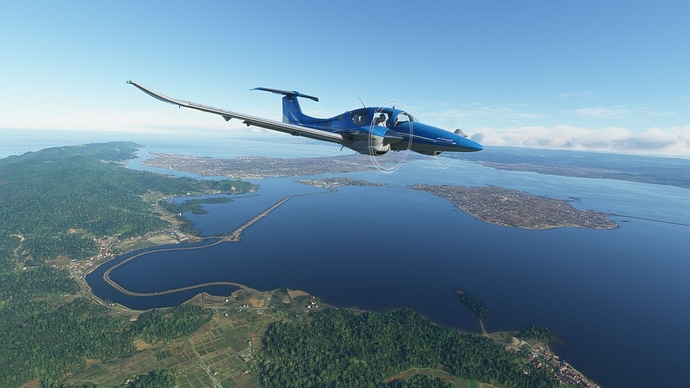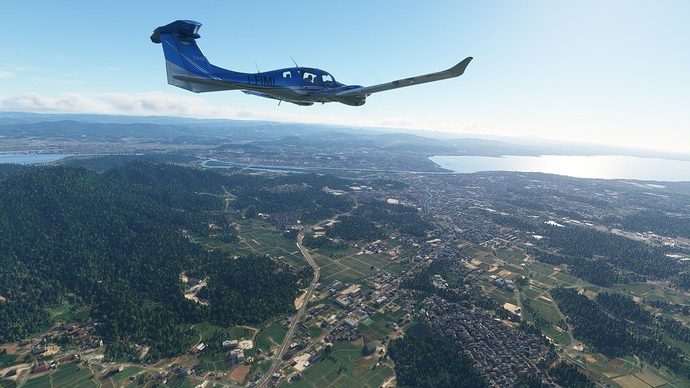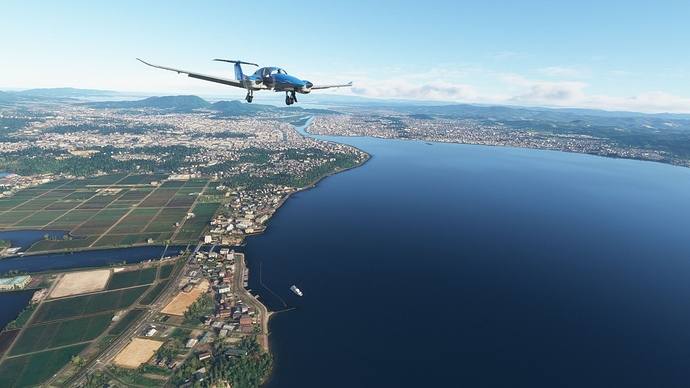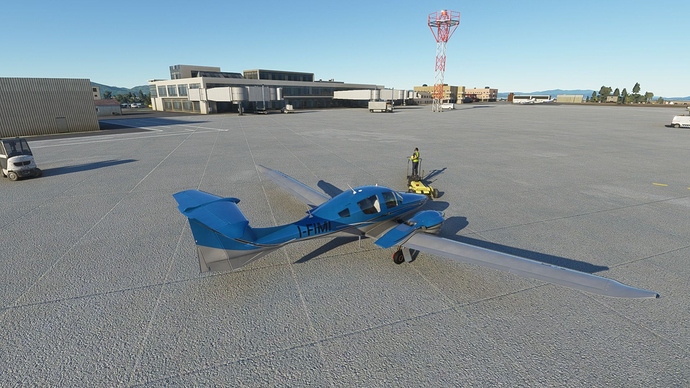Two more legs, 18 and 19. Leg 18 was from Amami (RJKA) to Kagoshima (RJKF) in Kyushu. Leg 19 was from Kagoshima back to the mainland of Honshu, Iwami (RJOW) airport. No more island hopping.
Here are the full galleries:
Departing from Amami, with the Ayamaru Misaki Kanko Park in the background.
The large island of Yakushima, home to over 13,000 people, beautiful nature sitting on its granite bedrock, and for once, no volcanoes. Its dense forests inspired Hayao Miyazaki for the creation of Princess Mononoke and Hideo Kojima for Metal Gear Solid 3.
Nearby is the island of Kuchinoerabu. This one does have an active volcano and a much smaller population of about 150 (it’s much more desirable to live on granite than on boiling lava, who would have thought?)
Partly hidden by the clouds is Iojima and its massive volcano, the Kikai Caldera, source of the second-largest eruption of recorded history over 6,000 years ago. Despite frequent minor eruptions, about 150 people live here and even have their own airport.
Flying over the city of Kagoshima. It’s called “The Naples of the East” and you’ll soon see why. Home to about 600,000 people, a rich food culture, and glorious history centered around the famous Shimazu samuraiclan and the Satsuma domain.
And here’s the reason for the nickname, the massive stratovolcano Sakurajima, still most definitely active. It used to be an island, but the giant eruption in 1914 turned it into a peninsula attaching it to the mainland. Luckily, the lava flow went into the opposite direction compared to the city, which suffered only minor damage due to ash fall.
The latest eruption was… last month. It’s quite the neighbor.
Approaching the airport, we fly over the city of Kirishima. With about 125,000 people, it’s much smaller than Kagoshima and takes its name from Mount Kirishima, which is also another active volcano. Yes. It’s a pattern.
The regional airline Japan Air Commuter has its headquarters here, with its main base at Kagoshima airport.
Kagoshima airport at last. It’s the second-busiest airport in Kyushu and hosts both domestic and international flights to Taiwan, China, and Korea.
Time to take off again from Kagoshima. Crappy day with very low clouds.
Kumamoto city and its airport. Capital of its own prefecture, it’s famous for its beautiful castle and the tomb of the famous samurai Miyamoto Musashi. While not as busy as Kagoshima, the airport hosts both domestic and international flights.
North-East of Kumamoto, we cross the Kiju Mountains and the famous Kokonoe Yume Otsurihasi suspension bridge across a beautiful and scary as hell canyon with forests and waterfalls. 390 meters long, it’s suspended 173 meters above the valley floor. I actually crossed it on foot (it’s a pedestrian bridge) years ago, and I’m terribly afraid of heights. I’ll leave the rest to your imagination.
Tsuiki Air Field home of the JASDF 8th Air Wing and its partly home built Mitsubishi F-2 fighters.
Kitakyushu airport and Kanmon Bridge. We’ve already been here and we’re crossing the Kanmon straits back to the mainland of Honshu.
The clouds get really low as we reach Hagi, home to a population of 50,000, a beautiful castle town of the same name, and Hagi ware, a famous form of pottery.
Buttering the landing at Iwami airport despite the poor visibility. It’s a small airport that hosts only two daily flights to Tokyo operated by ANA. The famous Hagi-Iwami Airport Marathon in the fall starts with a run on the airport’s runway. In the summer, the Inaka Ride has cyclists cycling on the runway as well. The airport isn’t busy enough to requiring its scheduled operations be interrupted for either event.


